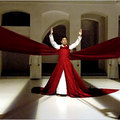PHOENIX — The summer travel season is under way, and so many planes are expected to be full that, if you are bumped, you could end up waiting days for a seat on another flight to the same destination.
The number of fliers bumped against their will is expected to reach a high for the decade this year.
True, those travelers — about 56,000 of them — still represent only a small fraction of all passengers. But the increasing difficulty of rebooking bumped passengers has made the experience more maddening for fliers, and for the airline workers who deliver the bad news.
A look behind the scenes of US Airways at the widespread practice of airline overbooking shows the industry’s struggle to fill every possible seat, including those left empty by the millions of passengers who buy a ticket but then do not show up.
The effort at times pits a group of young math whizzes at the airline against battle-tested gate agents, who are often skeptical of the complex computer models used to predict no-shows and to overbook flights.
Some agents even take matters into their own hands, creating phantom reservations — Mickey Mouse is a favorite passenger name, for example — to keep the math nerds at headquarters from overbooking a flight.
“It’s a little bit of black art,” said Wallace Beall, senior director for revenue analysis who oversees overbooking at US Airways.
Overbooking is one of many airline practices that are complicated by crowded planes. Airlines are running closer to capacity than at any point during the jet age — an expected 85 percent or so full this summer, which means all the seats on popular routes will be taken.
Airlines, of course, overbook to avoid losing billions of dollars because of empty seats. Inevitably, though, they guess wrong on some flights and too many people arrive at the gate.
Vouchers for free flights have long been used to convince enough passengers to stand aside and wait for the next flight. But now, more people are refusing the voucher — which can vary from a small dollar amount to a round-trip ticket anywhere an airline flies (people who are involuntarily bumped get up to $400 for their troubles).
The reason is that fliers have figured out that with flights full, there are fewer and fewer seats to be bumped to.
“I usually volunteer to be bumped,” said Pamela Ingram, a consultant who travels most weeks from her home in Binghamton, N.Y., and loves collecting airline vouchers for leisure travel.
“But not lately,” she said. “It’s a different game. The wait can be days.”
The number of people bumped involuntarily — those refusing the voucher — rose 23 percent last year and kept rising in the first quarter of this year.
The ranks of all bumped passengers last year, 676,408, was small — unless you were one of them — compared with the 555 million total airline passengers.
Airline workers, of course, do not like bumping, either.
“It’s embarrassing,” said Brigid Mullin, a gate agent for US Airways here. On one or two flights a day, Ms. Mullin is left to explain to passengers that US Airways sold more tickets than it has seats on the plane.
“People are going to yell,” Ms. Mullin said.
Mr. Beall, the US Airways official, said, “Employees call in sick because they don’t want to deal with overbookings.”
Other coping strategies by agents include entering phantom bookings — in addition to Mickey Mouse, they occasionally enter the name of W. Douglas Parker, the chief executive at US Airways — to keep a flight from being oversold.
But phantom bookings later show up in the computer system as, you guessed it, a no-show, and the system then will overbook the next flight even more.
“We call it the death spiral,” said Mr. Beall’s boss, Thomas Trenga, vice president for revenue management at US Airways.
The airline has repeatedly told gate agents not to enter phantom bookings since US Airways and America West Airlines merged in the fall of 2005.
At an employee meeting just after the merger, Mr. Parker was confronted about the issue by John Martino, then a gate agent in Boston. “You know you’re going to be yelled and screamed at to the point you have to call the police,” he said.
Mr. Parker replied: “Why do we do so much of it? We will overbook as long as we allow people to no-show for flights; 7 to 8 percent of our customers are no-shows.”
At some airlines, the no-show rate is higher, as passengers take advantage of refundable tickets, which include those bought by business travelers at the last minute.
The potential impact is huge. US Airways had revenue of $11.56 billion last year and would have lost out on $1 billion or more of that had it not overbooked, the company said.
And with profit of just $304 million for the year, and with other airlines operating on similarly slim margins, “we’d probably all go bankrupt” without overbooking, Mr. Trenga said.
That said, Mr. Trenga acknowledged, “People view overbooking as something not on the up-and-up.”
So, while he tells his neighbors that he oversees pricing at US Airways, “I conveniently forget to mention the overbooking part.” US Airways rates in the middle of the industry pack on bumping passengers.
Of course, airlines could end no-shows and the need for overbooking by selling only nonrefundable tickets. JetBlue Airways does that, and no-shows lose the value of their ticket.
But business travelers, who pay the most, want refundable tickets and even JetBlue is considering offering them.
The revenue lost by leaving a seat empty — a spoiled seat, in industry parlance — typically exceeds the cost of compensating a bumped passenger. Only fear of angering people keeps airlines from overbooking more.
No-show rates used to be much higher — 20 percent or more for many airlines. Many travel agent reservations were unreliable. Other bookings were duplicates.
At US Airways, into the late 1990s, the no-show rate was about 14 percent, Mr. Beall said, and its ability to overbook accurately suffered. “We were stuck in an overbooking quagmire,” he said. “We had scant credibility” with gate agents.
But even after cleaning up its reservations and reducing no-shows to 7 percent to 8 percent, no-shows still vary widely among flights.
Mr. Beall entrusts the overbooking to people like Sherri Owens, 22. An economics graduate from the University of Virginia, she joined US Airways a little more than a year ago. Like nearly 50 other analysts, Ms. Owens uses software that scans the past no-show rate on flights, breaking it down among as many as 26 fare levels.
People paying the cheapest fares, which are typically nonrefundable, show up; those paying the most, usually refundable fares for business travelers, are more frequently no-shows. Midwesterners show up. People leaving Las Vegas often do not.
The software then takes note of the fares people are booking on a coming flight and estimates the number that will not show. Airlines overbook more aggressively early in the day, knowing they can find seats for those bumped as the day goes on.
Ms. Owens, along with her main job of setting various fares on a single flight, tweaks the overbooking numbers. Then, each week a report comes out that lists all US Airways flights that bumped 10 or more people. The analyst with the most flights on the report is stuck with a stuffed toy crow for the week. And occasionally they hear from angry airport workers who handled the bumping.
The week of April 23, for instance, 18 flights had 10 or more passengers bumped. Half those flights had fewer seats than were sold because of weather-related weight restrictions or substitution of a smaller plane, including a flight from Phoenix to Cabo San Lucas, Mexico, that left 37 passengers behind.
On others the airline guessed wrong. A Phoenix-to-San Diego flight, normally with 10 percent of passengers not showing, overbooked by 17 percent. Only 3 percent no-showed. Thirteen people were left behind.
The following week, just 11 flights made the double-digit list. A Las Vegas-to-Boston flight left 10 behind, including 8 involuntary bumps, when it was overbooked by 13 percent, despite the computer system’s listing past flights with only 5 percent no-shows.
Analysts are supposed to explain such failures, but the comments offered for that flight “are erroneous,” Mr. Beall said, scanning the report. “In a perfect world, a manager would force the analyst to come back” and explain. Time-pressed, however, he said, “I can’t guarantee that would happen.”
The analysts are somewhat insulated. Ms. Owens said she had never personally been bumped from a flight. Airport workers regularly ask her to book fewer people on some flights.
“It’s something we look into,” she said. “They remember the flights that oversold and not the five that went out fine. We have all the data in front of us. Normally I compromise between what they’re asking and what I would like it at.”
When employees like Ms. Owens become proficient at the art of overbooking, they tend to leave for other jobs, her boss, Mr. Beall, said.
“They used to stay for two to two and one half years. Now they stay for one and one half. It takes three months to train them,” he said.
“In-depth knowledge is fleeting.”






